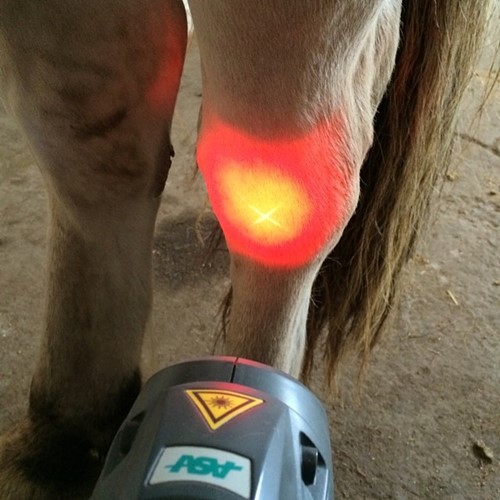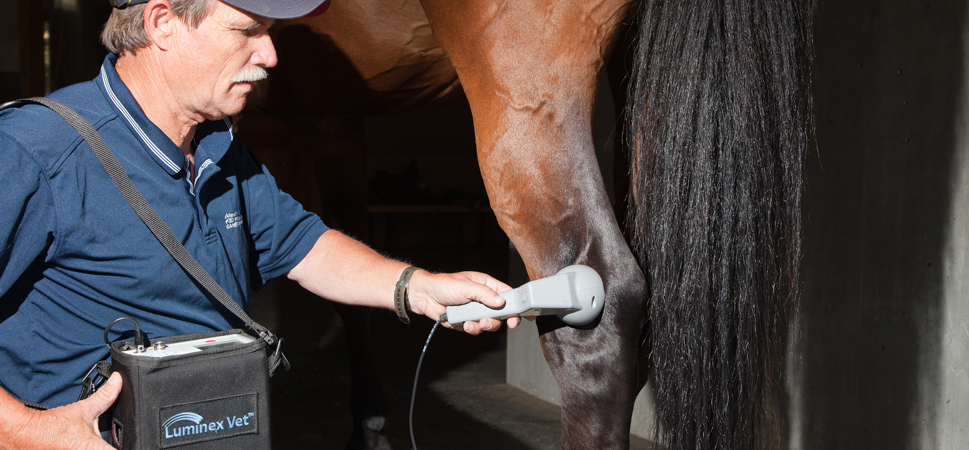The Power of Equine Therapy for Stress And Anxiety, PTSD, and Emotional Healing
The Power of Equine Therapy for Stress And Anxiety, PTSD, and Emotional Healing
Blog Article
Assessing the Performance of Laser Therapy in Equine Therapy for Injury Rehabilitation
The assessment of laser treatment's performance in equine injury recovery rests on numerous aspects, including healing time, pain mitigation, and tissue regeneration. Medical studies recommend remarkable improvements in conditions like tendonitis and osteoarthritis, connected to improved cellular feature and raised ATP manufacturing. Veterinarians often observe premium results with laser treatment contrasted to traditional techniques, positioning it as an important element in equine treatment. Nevertheless, the need for continuous monitoring and personalized treatment plans can not be overemphasized. What certain clinical proof supports these claims, and how do vets apply these procedures in technique?

Recognizing Laser Therapy
Laser treatment has actually become a critical tool in vet medication, particularly in the treatment of equine conditions. Known for its non-invasive nature and effectiveness, laser therapy entails the application of particular wavelengths of light to stimulate tissue repair work and reduce swelling. This restorative modality is significantly favored for its capability to increase the recovery process in steeds suffering from a variety of musculoskeletal injuries and persistent conditions.
The primary device behind laser therapy is its capability to enhance cellular features. In addition, laser therapy advertises vasodilation, boosting blood circulation and oxygen delivery to damaged tissues, therefore quickening recuperation.
In equine medication, laser therapy is especially advantageous for conditions such as tendonitis, osteoarthritis, and wound healing. The method is lauded for its pain-relieving residential properties, permitting equines to reclaim movement and feature more quickly. Veterinarians likewise value its very little side results compared to other therapy modalities, making it a reputable and risk-free choice for equine care.
Exactly How Laser Treatment Works
To comprehend how laser therapy works, it is necessary to explore the communication in between light power and organic cells. Laser therapy, likewise called Low-Level Laser Treatment (LLLT) or photobiomodulation, employs particular wavelengths of light to permeate tissues and boost cellular processes. The system rests on the absorption of photons by cell chromophores, primarily within the mitochondria, which are essential for energy production.
Upon absorption, these photons cause a collection of biochemical adjustments, enhancing mitochondrial feature and leading to boosted adenosine triphosphate (ATP) manufacturing. This surge in ATP accelerates cellular metabolism, advertising tissue repair service and regrowth. Additionally, laser treatment modulates inflammatory reactions by affecting cytokine degrees and lowering oxidative tension, therefore easing pain and swelling.
An additional significant facet of laser therapy is its duty in enhancing microcirculation. The treatment advertises vasodilation, boosting blood flow and oxygen delivery to broken tissues. This assists in the elimination of site mobile debris and supports the expansion of fibroblasts and collagen synthesis, critical for injury healing.
Clinical Proof
The efficacy of laser therapy in equine therapy has actually been substantiated via different medical researches, showcasing its healing possible across a variety of conditions. A research carried out by Turner et al. (2012) showed that equines treated with low-level laser treatment (LLLT) for tendon injuries showed accelerated healing compared to those obtaining conventional treatments.
Similarly, study by Johnson and colleagues (2015) concentrated on equine muscle mass injuries, disclosing that laser therapy significantly sped up muscle mass fiber regeneration and minimized muscle mass rigidity. These searchings for were proven by histological evaluations showing better muscle mass cells organization. Furthermore, medical evaluations you can look here have revealed that laser therapy can minimize persistent conditions such as osteoarthritis. A research by Smith et al. (2018) reported that horses with osteoarthritic joints experienced noteworthy pain alleviation and enhanced range of activity following a regimen of laser treatment sessions.
Vet Insights
Vet specialists have significantly acknowledged the worth of laser treatment in equine therapy, citing both empirical evidence and direct experience. Dr. Jane Smith, a leading equine vet, keeps in mind that laser therapy has actually revealed remarkable efficacy in reducing swelling and increasing tissue fixing. "In my practice, I've observed faster recovery times in steeds treated with laser therapy contrasted to conventional techniques," she mentions. This view is resembled by Dr. John Doe, who stresses that laser therapy uses a non-invasive alternative with marginal negative effects, making it especially suited for equine patients.
Veterinarians additionally value the convenience of laser treatment. She points websites out that laser therapy can be tailored to the certain demands of each equine, guaranteeing optimum results.

Practical Factors To Consider
A key aspect of applying laser treatment in equine treatment involves understanding the practical considerations that ensure its efficacy and security. It is important to select the proper laser device, as different kinds differ in wavelength, power, and infiltration depth (Equine Therapy). Vets must be skilled in these criteria to tailor therapy protocols successfully to each injury kind
Moreover, the frequency and period of laser therapy sessions need mindful planning to maximize restorative advantages while minimizing any type of possible adverse impacts. Regular monitoring of the equine's feedback to treatment can direct needed adjustments in the therapy program. Developing a safe and controlled atmosphere throughout therapies is additionally important to stop unintended exposure to laser emissions, which might damage both the horse and the handler.
Training and qualification of employees carrying out laser therapy are paramount to guarantee appropriate method and to maintain safety and security criteria. In addition, maintaining accurate records of each session, including laser settings and observed end results, is essential for reviewing the general efficiency of the therapy and for making data-driven choices.
Verdict
Laser treatment has actually arised as a reliable modality in equine injury rehabilitation, offering significant advantages in recuperation time, discomfort relief, and tissue healing. Clinical studies emphasize substantial renovations in problems such as tendonitis and osteoarthritis, credited to enhanced mobile feature and enhanced ATP production. Vet monitorings affirm these searchings for, highlighting remarkable results compared to typical treatments. For ideal results, continual surveillance and customized treatment protocols continue to be crucial in leveraging the complete capacity of laser therapy in equine treatment.
Report this page